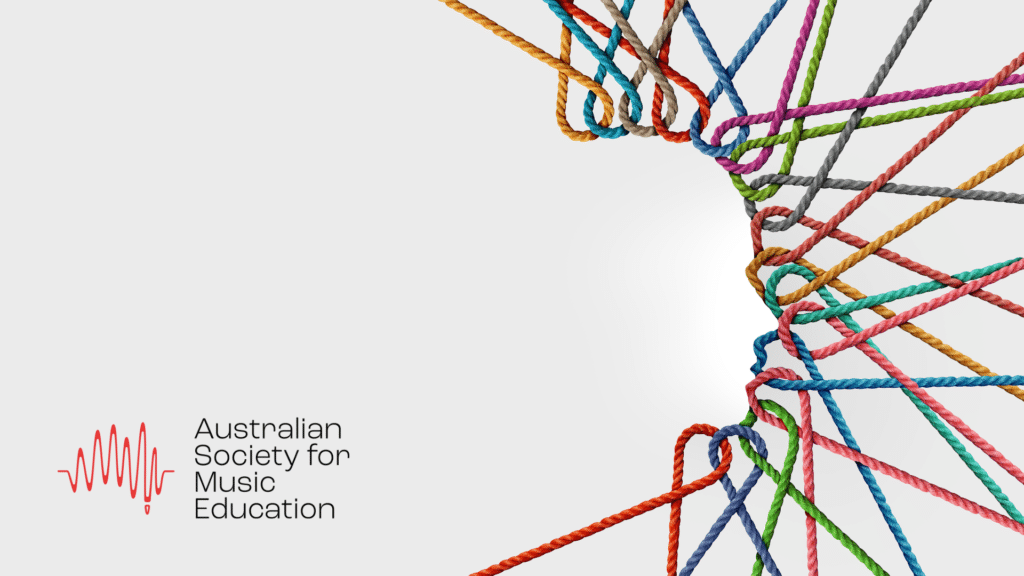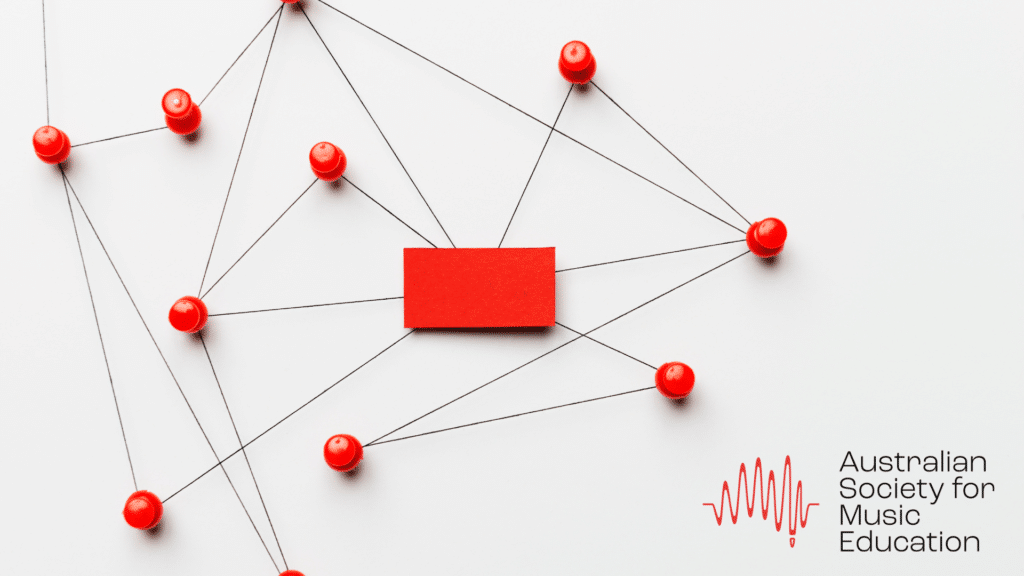Decolonising the music classroom: Five ways forward
Aleryk Fricker and A. Bryan Fricker, NIKERI Institute, Deakin University, Victoria
Citation: Fricker, A., & Fricker, A. B. (2023). Decolonising the music classroom: Five ways forward. Australian Journal of Music Education, 55(2), 3-14.
In this article, First Nations educators and scholars, Fricker and Fricker, describe the ways that music education in Australian music classrooms is both a product of colonisation, and contributes to the ongoing colonisation of education. They draw on Freire’s notion of “conscientisation”: a process of becoming critically conscious, particularly in relation to how the world has historically come to be as it is, and how that has contributed to power, oppression and liberation. This allows us to see the ways that music education reinforces and perpetuates colonisation, and how music “teachers have the potential to begin the work of decolonisation to build conscientisation in the future Australian voting public.” (p. 8)
Fricker and Fricker describe five applied approaches that they propose can “begin the process of conscientisation” (p. 7):
- Policy: Being aware of and critically engaging with the policies that inform music teachers work, equipping themselves to identify weaknesses in policy and pushing back where they can.
- Curriculum: Centre First Nations music, and in doing so, deliberately interrupt the dominant narrative, uncovering the ways Western values are centred in the curriculum.
- Pedagogy: Relying on the use of notation as the primary means for engaging with music marginalises First Nations music (and other musics outside of Western classical music). Considering how a First Nations pedagogical approach like 8 ways (Yunkaporta, 2009) allows for different means of engagement with musics in context.
- Place and Space: Recognise that classrooms and schools are relatively recent, colonial inventions, and that learning happens within and beyond classrooms. Make use of different physical environments, and ensure the classroom can facilitate different arrangements of furniture and people (eg. A yarning circle).
- Community Engagement: Where possible, schools should engage First Nations musicians and community members, to work directly with students and/or to work with staff. It is vital that First Nations guest artists/speakers are paid for their time.
 This summary was prepared for ASME Insights by Dr Rachael Dwyer. Rachael is a Lecturer in Curriculum and Pedagogy at the University of the Sunshine Coast, and is National Vice-President of ASME. Her research expertise lies in teacher education policy, music and arts education. Her scholarship is focused on creating social change, through decolonizing, arts-based approaches to teaching, advocacy and research, and sharing her scholarship in ways that impact policy and practice. Rachael has published extensively for a range of audiences, and has received research funding from International Teaching Artist Collaborative (ITAC) and Alberts | The Tony Foundation.
This summary was prepared for ASME Insights by Dr Rachael Dwyer. Rachael is a Lecturer in Curriculum and Pedagogy at the University of the Sunshine Coast, and is National Vice-President of ASME. Her research expertise lies in teacher education policy, music and arts education. Her scholarship is focused on creating social change, through decolonizing, arts-based approaches to teaching, advocacy and research, and sharing her scholarship in ways that impact policy and practice. Rachael has published extensively for a range of audiences, and has received research funding from International Teaching Artist Collaborative (ITAC) and Alberts | The Tony Foundation.
ASME Insights provides access to easy-to-read summaries of recently published research in music education, highlighting the ways that the research could inform your classroom practice. ASME Insights is edited by Dr Rachael Dwyer.
Image credit: By Somno – Own work, CC BY-SA 4.0, Link


